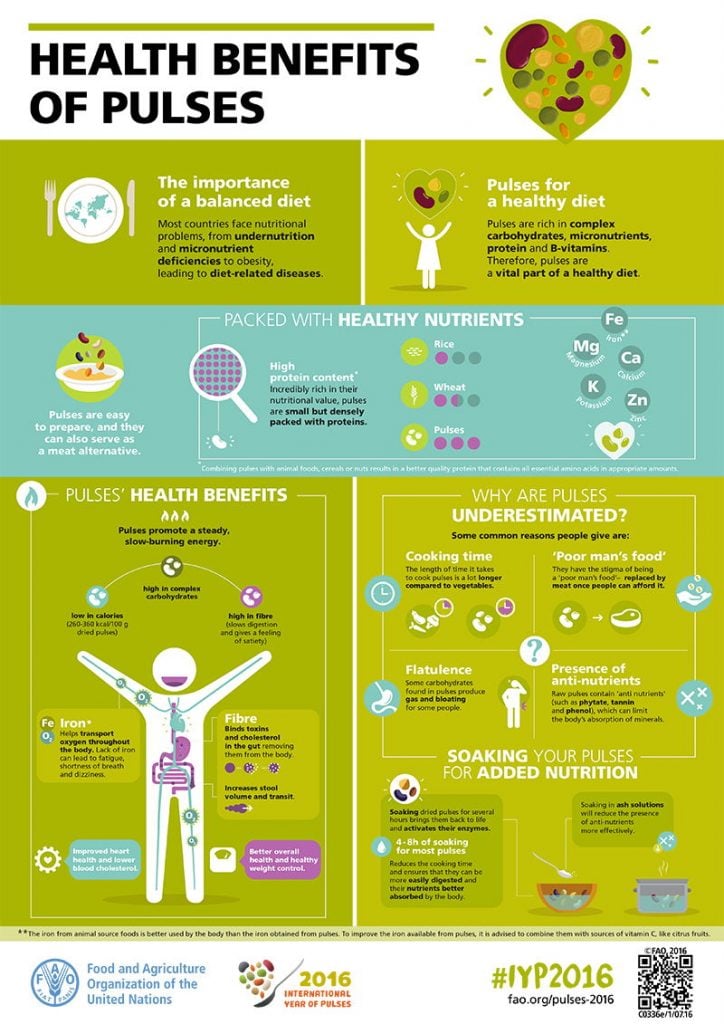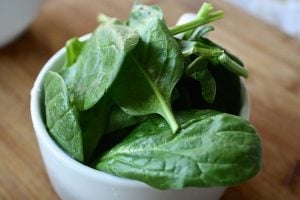Pulses is not exactly a common word yet you most likely partake of them daily. So what are they exactly?
Pulses are basically seeds that you can cook and eat. They include beans, peas and lentils. The more general term that is used is legume, however there’s a subtle difference – pulses belong to the legume family but refer to the dried seed only.
The United Nations Food and Agriculture Organization (FAO) recognizes 11 pulses. The common ones are:
- dry beans e.g kidney beans, green grams (ndengu), black beans (njahi), pinto beans etc.
- dry peas
- chickpeas
- cowpeas (kunde)
- pigeon peas (mbaazi)
- lentils (kamande/ndengu kamande)
- dry broad beans
- lupins
- vetches
- faba beans
Health Benefits of Pulses

Pulses are not only very rich in proteins but are also rich in complex carbohydrates, micronutrients like iron, magnesium, zinc and potassium and B-vitamins.
For that reason they are an important component of a balanced diet and due to their protein content can easily be served as an alternative to meat.
1. Low in Calories and Fat
Pulses are not only low in calories (260-360 kcal/100g) but also low in fat. They are also rich in complex carbs and fibre which makes them slow to digest.
Consequently they release energy much slowly increasing the feeling of fullness as well as stabilizing blood sugar and insulin levels. For this reason they are ideal for diabetics and also for those watching their weight.
2. High in Dietary Fibre
Pulses are high in dietary fibre which is good for a healthy digestive system as it increases the stool volume and transit time.
The fibre also binds toxins and cholesterol aiding their removal form the body and thereby lowering blood cholesterol which reduces the risk of one getting cardiovascular disease.
3. Good Source of Micronutrients
They are rich in iron, an essential mineral which aids the body to transport oxygen, boost energy production and metabolism.
They are also good sources of vitamins such as folate which is vital for pregnant women as it reduces the risk of their babies being born with neural tubal defects like spina bifida.
Pulses also contain calcium, a mineral that helps your body build strong healthy bones thus reducing the risk of fractures and osteoporosis especially in post-menopausal women.
4. Good Source of Anti-oxidants
Pulses are rich in anti-oxidants and phytochemicals which may have cancer fighting properties. The presence of phytoestrogens may also prevent cognitive decline and reduce the symptoms of menopause.
Why people don’t like eating pulses?
1. Cooking time
For most people the main issue with pulses is the cooking time. Due to their dry and hard shells, pulses are notorious for taking hours on the stove and as such are not ideal for those that prepare quick meals.
Solution: Soak your pulses 4 – 8 hours in water before cooking them. This will not only make them soft and faster to prepare but also make them easily digestible and their nutrients are better absorbed by the body.
Cooked pulses can also be frozen and prepared when you need them. They should however not be frozen for long periods as this can affect their taste and texture.
2. Flatulence
Another common criticism is that they cause flatulence. The victim here is usually beans. This is because some beans contain undigestible carbohydrates.
Flatulence however doesn’t affect everybody and some people may find it lessens with increased and regular intake.
Solution: Soaking the dry beans before cooking them can help reduce the carbohydrates that causes flatulence.
3. Anti-nutrients
Uncooked pulses contain anti-nutrients such as phytates which are substances that bind to micro-nutrients like iron reducing their uptake by the body.
Solution: Soaking pulses in water for 12 hours will help to reduce the presence of anti-nutrients. Soaking in ash solutions is however more effective.
4. Poor Man’s Food
Some people simply shun pulses because they can afford “better and quality” proteins, namely Meats. The health benefits of pulses should convince you otherwise. Also, while meats are an essential part of a balanced diet, they are not very healthy when consumed too much.
Getting the most from your Pulses
1. Vitamin C – the iron available in pulses is not as readily available as that from animal
sources (meats) and therefore it’s recommended to eat them together with foods that are rich in Vitamin C which enhances its absorption.
This could include citrus fruits (oranges, lemons etc.) or their juices, tomato or tomato juice, greens, broccoli and sweet potatoes just to mention a few.
2. Grains – combining pulses and grains such as maize increases the ability of the body to better absorb iron and other minerals in pulses. You can now see why Githeri isn’t a bad idea.
3. Avoid taking Tea/Coffee with or after meals – these beverages contain anti-nutrients that bind to iron and other minerals hence reducing the ability of the body to absorb them. This not just true for pulses but also other foods, especially vegetables.
Infographics on Pulses
The infographics below courtesy of FAO were released back in 2016 which was the year of the Pulses. We would like to share them with you too.



Images Sources: FAO





